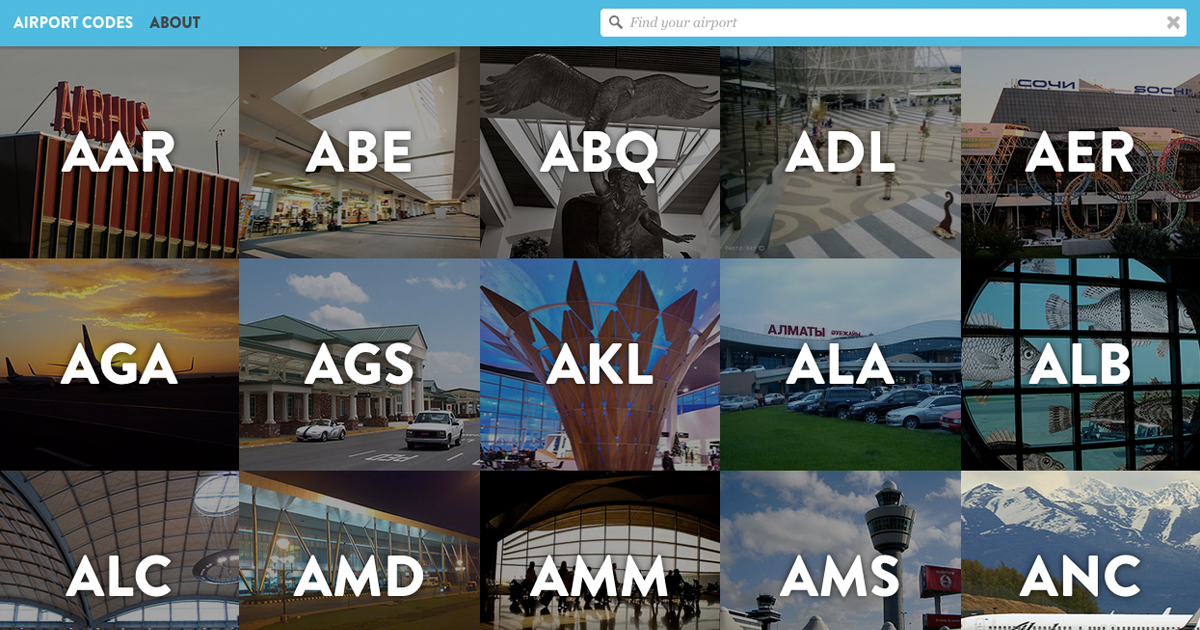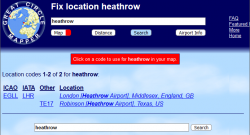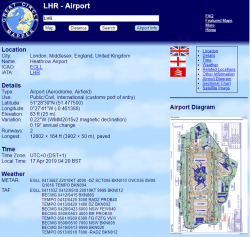You are using an out of date browser. It may not display this or other websites correctly.
You should upgrade or use an alternative browser.
You should upgrade or use an alternative browser.
Acronyms for Qantas destinations.
- Thread starter onemore
- Start date
- Status
- Not open for further replies.
defurax
Established Member
- Joined
- Jun 27, 2012
- Posts
- 3,192
- Qantas
- Platinum 1
You can find the list of all IATA 3-letter airport codes here:
List of airports by IATA code: A - Wikipedia
List of airports by IATA code: A - Wikipedia
The 3-letter airport codes are assigned by IATA and can all be found at their website:Is there a list of acronyms on this forum for all the Qantas ports, please?
Airline and Airport Code Search
Thanks Mike65, you young blokes sure know what is going on, Cheers.The 3-letter airport codes are assigned by IATA and can all be found at their website:
Airline and Airport Code Search
woodborer
Established Member
- Joined
- Nov 17, 2013
- Posts
- 1,016
Mike65, but there is nothing for LST there, can you enlighten me on that one please?
| City name | 3-letter city code | Airport name | 3-letter airport code |
| Launceston | LST | Launceston | LST |
JohnM
Enthusiast
- Joined
- Jun 7, 2006
- Posts
- 11,812
- Qantas
- LT Gold
There is an IATA and an ICAO code for airports. Some small ones don’t come up under IATA searches.
This site : Data Hub for all the World's Airports - World Airport Codes seems to capture most places. And give both codes.
This site : Data Hub for all the World's Airports - World Airport Codes seems to capture most places. And give both codes.
GoldCanyon340
Established Member
- Joined
- Jun 15, 2011
- Posts
- 2,745
- Qantas
- Platinum 1
Read our AFF credit card guides and start earning more points now.
AFF Supporters can remove this and all advertisements
- Joined
- May 29, 2011
- Posts
- 2,196
Some popular/common ones are also listed in our help section.
 www.australianfrequentflyer.com.au
www.australianfrequentflyer.com.au
Abbreviations & Explanations
A list of common abbreviations used on the forum.
 www.australianfrequentflyer.com.au
www.australianfrequentflyer.com.au
AisleSeat
Established Member
- Joined
- Nov 11, 2016
- Posts
- 1,542
This one is another good one. Doesn't have all of them but is just so nice to use.


Himeno
Senior Member
- Joined
- Jun 15, 2011
- Posts
- 5,711
IATA assigns 3 letter city codes to airports, cities (with a number of airports) and some train stations, and 2 letter codes to airlines. Only the airports with regular public service (at some point in the airports history) tend to get IATA codes.Is there a list of acronyms on this forum for all the Qantas ports, please?
These codes are mostly used in public facing areas of air travel, the most common use being baggage tags.
ICAO assigns 4 letter codes to airports, helipads, etc and 3 letter codes to airlines. These codes are rarely seen by the public and are used for flight planning, air traffic control, navigation, etc. The first 1 or 2 letters of the airport code are generally what part of the world the location is in and the 3rd and 4th letter the city. eg YMML is MEL. Y because it is in Australia, M for the Melbourne FIR and ML for the city. Some old defunct FIRs are in the IACO codes, eg YSCB (Canberra) and YSSY (Sydney) refer to the Sydney FIR which closed some time ago.
Here are the IATA codes for (most) of Qantas's international ports
LHR
SCL
JNB
LAX
SFO
YVR
DFW
JFK
HNL
HND
NRT
KIX
PVG
PEK
BKK
HKG
SIN
DPS
CGK
MNL
HKT
NAN
NOU
POM
AKL
CHC
ZQN
WLG
AustraliaPoochie
Senior Member
- Joined
- Feb 9, 2014
- Posts
- 8,108
Also to note, some cities like MEL/SYD/PER follow their spelling, but there are cases like ADL and DRW that don't.
Also, PEK still uses the old (former) city name, now we all know it as Beijing Capital Airport.
HND and NRT also don't follow their spelling, both are in Tokyo.
Some airlines make you transfer between the 2, for inter Japan flights.
MEL and AVV while in the same state, Vic are separate airports, don't laugh, some people have gotten then mixed up, people have turned up at MEL but had booked flights for dep from AVV, about an hour away by car.
Also, PEK still uses the old (former) city name, now we all know it as Beijing Capital Airport.
HND and NRT also don't follow their spelling, both are in Tokyo.
Some airlines make you transfer between the 2, for inter Japan flights.
MEL and AVV while in the same state, Vic are separate airports, don't laugh, some people have gotten then mixed up, people have turned up at MEL but had booked flights for dep from AVV, about an hour away by car.
Himeno
Senior Member
- Joined
- Jun 15, 2011
- Posts
- 5,711
To be fair, though NRT was called New Tokyo Internatonal Airport when it opened and it is the primary airport for the city, it is about an hour away in Narita, with Narita City being about 10 minutes away.HND and NRT also don't follow their spelling, both are in Tokyo.
There's also been people who book flights to eg Sydney, NSW and end up in Sydney, ON or Melbourne, VIC ending up in Melbourne, FL and Paris, France and end up in Paris, TX.MEL and AVV while in the same state, Vic are separate airports, don't laugh, some people have gotten then mixed up, people have turned up at MEL but had booked flights for dep from AVV, about an hour away by car.
- Joined
- Nov 16, 2004
- Posts
- 49,093
- Qantas
- Platinum
- Virgin
- Platinum
- Oneworld
- Emerald
Also, you can use the Great Circle Map website to perform lookups.
www.gcmap.com
e.g. Enter "Heathrow" and you get:

www.gcmap.com
e.g. Enter "Heathrow" and you get:

- Joined
- Nov 16, 2004
- Posts
- 49,093
- Qantas
- Platinum
- Virgin
- Platinum
- Oneworld
- Emerald
Or, @onemore , enter LHR and you get all you ever wanted to know and more:Also, you can use the Great Circle Map website to perform lookups.
www.gcmap.com
e.g. Enter "Heathrow" and you get:...

JohnM
Enthusiast
- Joined
- Jun 7, 2006
- Posts
- 11,812
- Qantas
- LT Gold
MEL and AVV while in the same state, Vic are separate airports, don't laugh, some people have gotten then mixed up, people have turned up at MEL but had booked flights for dep from AVV, about an hour away by car.
I was astounded recently to be in social company with people who had done just that
- Joined
- Jan 24, 2018
- Posts
- 9,618
- Qantas
- Gold
- Virgin
- Platinum
It’s more common than you think. I work with several people who go to Melbourne to watch the football and have done that in the pastI was astounded recently to be in social company with people who had done just that. I bit my lip...
justinbrett
Enthusiast
- Joined
- Mar 6, 2006
- Posts
- 11,717
- Qantas
- Platinum 1
- Oneworld
- Emerald
IATA codes hardly ever change (which is why a lot of Chinese / Indian airports use the old names) EXCEPT IATA codes usually move when airports are replaced - ie BKK moved and the old airport was given the code DMK - the same has just happened with IST, the old airport is now ISL.
For US airports, all airports in the Contiguous states have the same IATA and ICAO codes, you just add a K to the start of the IATA code to get the ICAO code. I believe it's the same with Canada, most of their IATA codes start with Y, and you add C to get the ICAO code (eg YYZ -> CYYZ). Very useful system. We could do the same by adding Y to the start of our IATA codes but almost all airports would have to change their ICAO code.
For US airports, all airports in the Contiguous states have the same IATA and ICAO codes, you just add a K to the start of the IATA code to get the ICAO code. I believe it's the same with Canada, most of their IATA codes start with Y, and you add C to get the ICAO code (eg YYZ -> CYYZ). Very useful system. We could do the same by adding Y to the start of our IATA codes but almost all airports would have to change their ICAO code.
- Status
- Not open for further replies.
Become an AFF member!
Join Australian Frequent Flyer (AFF) for free and unlock insider tips, exclusive deals, and global meetups with 65,000+ frequent flyers.AFF members can also access our Frequent Flyer Training courses, and upgrade to Fast-track your way to expert traveller status and unlock even more exclusive discounts!

AFF forum abbreviations
Wondering about Y, J or any of the other abbreviations used on our forum?Check out our guide to common AFF acronyms & abbreviations.
Currently Active Users
- stevenaus
- Kangol
- Bundy Bear
- andye
- dcaravaglio
- Pvcmenace
- Travelsnow85
- PineappleSkip
- glasszon
- kezzakawasaki
- jase05
- gman83
- am0985
- scibo10
- kpc
- Scr77
- sykoticx
- Flyfrequently
- bertflyer
- Zoneboarder
- wenglock.mok
- vbroucek
- somebol
- Murmal
- DejaBrew
- Hampton Mike
- justinbrett
- BrianQQ
- mviy
- http_x92
- Wello
- fafnersbane
- Peasant
- PerPH
- SOPOOR
- redbigot
- Dalescott
- bablong
- Austman
- jswong
- Stone
- albyd
- OZDUCK
- Lowjhg
- Harrison_133
- Layslow
- alect
- BenG
- SYD
- GarrettM
Total: 902 (members: 62, guests: 840)













